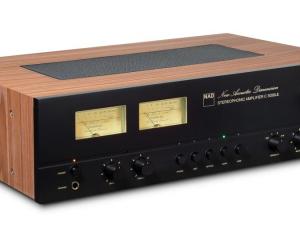
English author and musician Terry Burrows at work. (Photo: Steve Xerri)
Designed by Leo Fender and introduced in 1950, the Fender Telecaster was the first mass-produced solid body electric guitar.
And it was a Telecaster that was the first proper guitar that Terry Burrows owned. The English author and musician has since become one of the world’s foremost authorities on guitars, including the history of the instrument, as well as the playing, maintaining, and buying of them.
He’s been involved in a prolific number of titles on the topic, including The Complete Book of the Guitar, 1001 Guitars to Dream of Playing Before You Die, and the just republished Guitar Family Trees.
The latter documents the genealogy of guitar designs, acting as a comprehensive guide to brands such as Gibson, Fender, Rickenbacker, and Martin. Over 200 models are featured, with full page photographs and plenty of details.
Having been a classically trained pianist from the age of five, Burrows became eventually enthralled by the guitar in his mid-teens.
‘‘I didn’t really engage with rock/pop music at all until I was about 15, but when I did I went for it big time!’’ he recalls. ‘‘Before I could play the guitar properly, though, I built my own electric guitar - with some help from my dad - even winding my own pickups, so I was always interested both in how they worked as well as how to play them.’’
That interest has extended into the multiple guitar titles Burrows has authored or edited, as well as into his own music creation.
Although solid body electric guitars have evolved in some ways since they first became commercially available in the 1950s, the concept remains relatively simple.
‘‘Unlike a lot of musical instruments, the electric guitar is a pretty simple piece of technology,’’ Burrows says. ‘‘And yet since the 1950s it’s really dominated most forms of popular music. As punk showed, it’s easy for a beginner to get great, swift results... yet serious players can spend a lifetime trying to master its subtleties.’’
He reflects that the world of guitar design is quite conservative. A large proportion of those being sold today still based on models from the 1950s and 60s, including Fender’s Telecaster and Stratocaster, and Gibson’s Les Paul and SG.

‘‘They seemed, to me, like a miracle watching them in use,’’ Burrows says. ‘‘But they didn’t catch on, and are now a very niche interest.’’
Originally published in 2011, Guitar Family Trees was an attempt to make connections in the genealogy of the instrument that hadn’t previously been traced in detail. The book’s fold-out diagrams make the relationships clear.
While Burrows’ personal collection of around 40 guitars still includes that first Fender Telecaster he bought as a student, it’s another featured in Guitar Family Trees that is his favourite.
‘‘I would regard the Ibanez Jem Blue Flower Pattern featured in the book as the best all-round instrument I own,‘‘ he says. ‘‘Much to the horror of some purists I know.’’
Burrows has released music under monikers including Yukio Yung, Tonesucker, with the band The Chrysanthemums, and with his teenage son Louis as Yung Family. He continues to build his own guitars and modular synthesizers depending on the needs of his various projects.
‘‘As wonderful as many of the instruments I own are as objects in their own right - some dating back more than 100 years - for me they remain, at heart, tools for making music,’’ Burrows emphasises.
❏ Guitar Family Trees by Terry Burrows will be available in July from Allen and Unwin New Zealand. His music can be found at: onomaresearch.bandcamp.com












